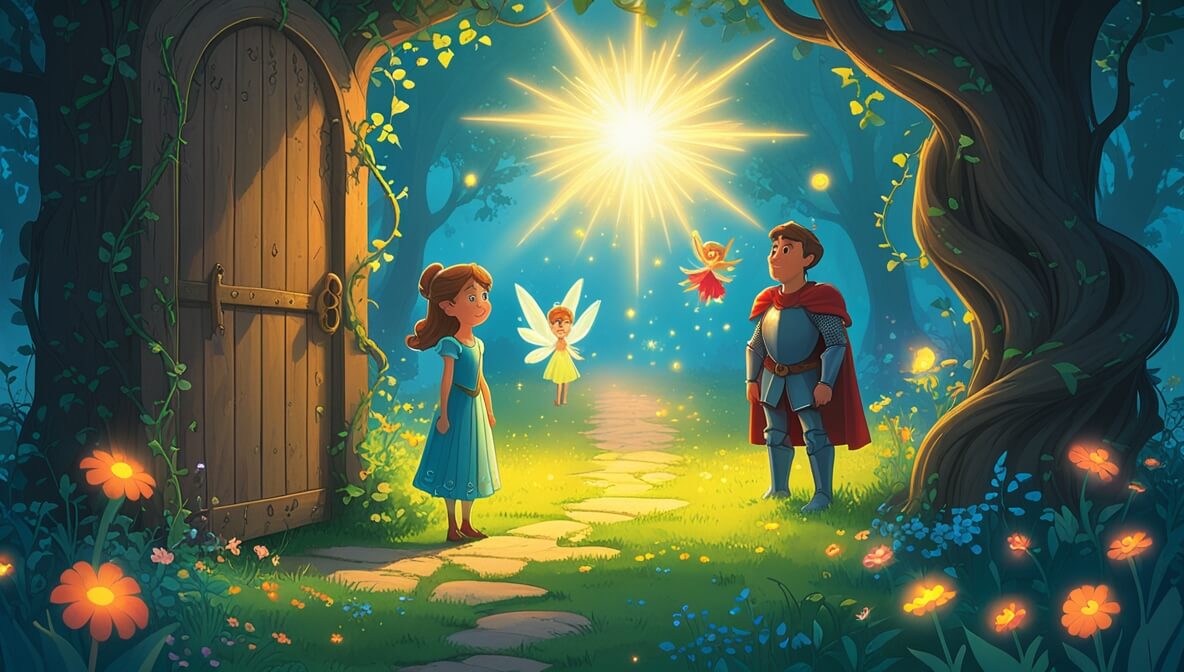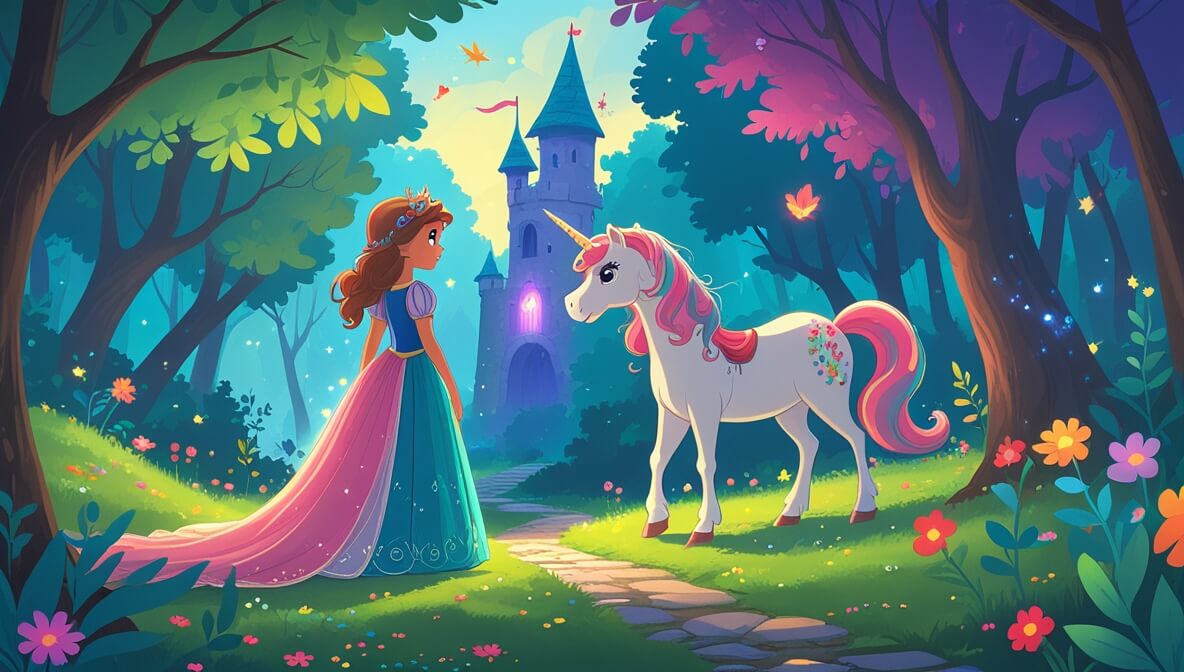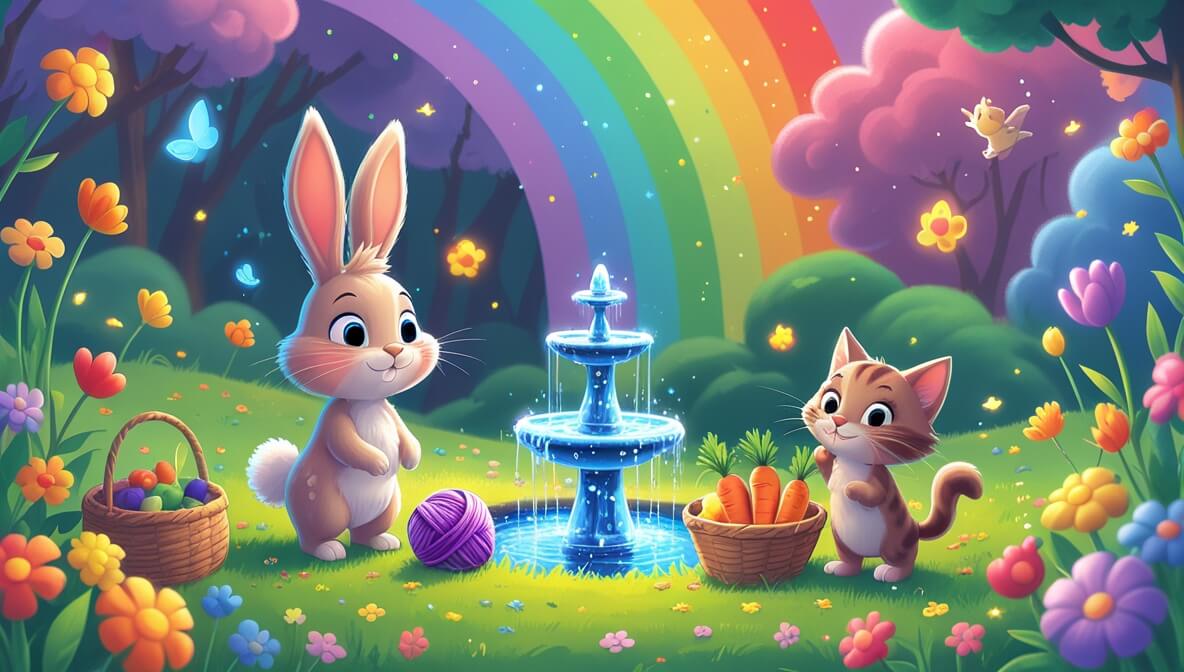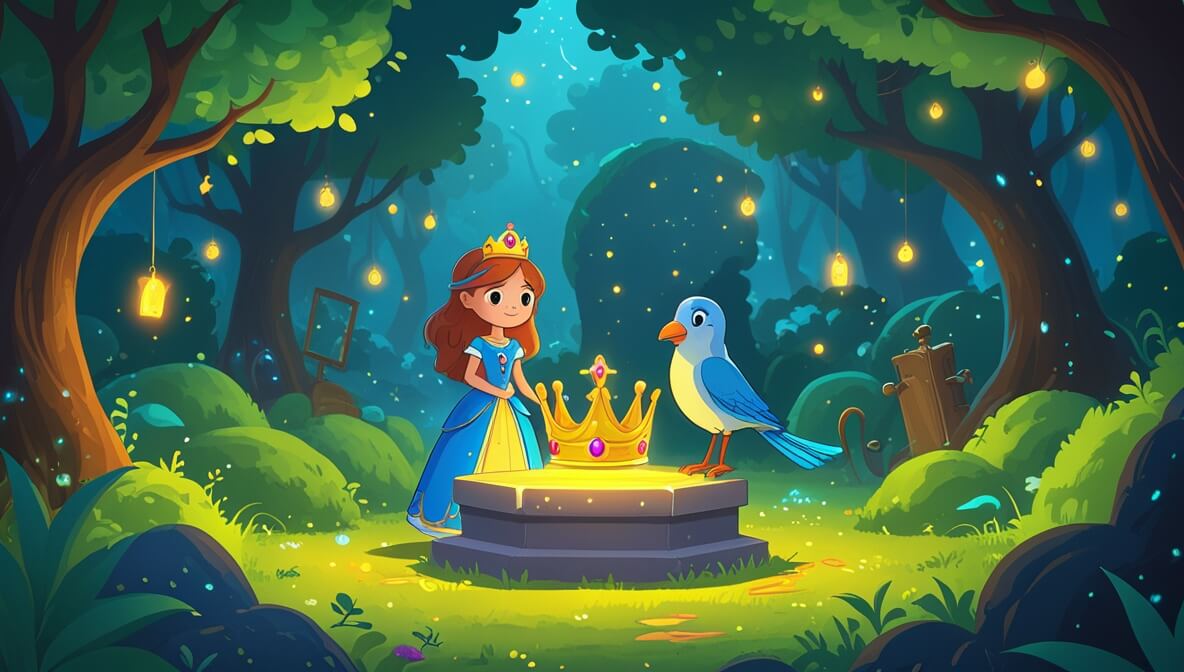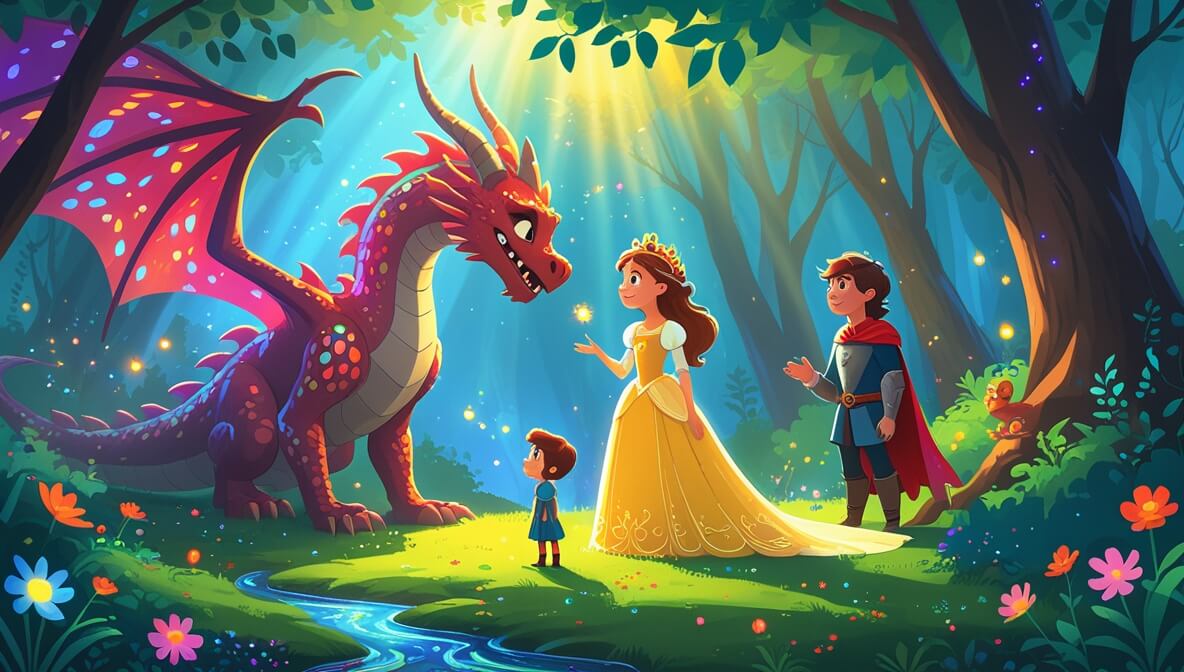In a kingdom where wishes could come true, a forgotten princess discovers the power of friendship and bravery with the help of an enchanted unicorn.
Age Recommendation
3 – 12 years
Characters
Characters:
- Princess Maribel (a curious and kind-hearted princess)
- Sir Lark (an adventurous knight with a brave heart)
- Wynne (a wise and magical unicorn)
- Queen Elowen (the gentle and loving queen)
Story
Once upon a time, in the shimmering Kingdom of Glimmerstone, there lived a princess named Maribel. She was known throughout the land for her kindness and her dreams of adventure. One day, while exploring the castle gardens, she stumbled upon a hidden path that she had never noticed before. Driven by her curiosity, she decided to follow it.
The Hidden Pathway
The path led Maribel to a mystical forest, where the sun’s rays danced between the leaves. As she wandered deeper, she heard a gentle voice calling her name. It was Wynne, a unicorn with a shimmering silver mane. Wynne told Maribel that the forest was enchanted and that it held secrets waiting to be discovered.
A Magical Friend
Together, Maribel and Wynne ventured through the forest. They came across a crystal-clear lake where the water sparkled like diamonds. Wynne dipped her horn into the water, and to Maribel’s amazement, the water began to glow. “This lake grants wishes to those who are pure of heart,” Wynne explained. Maribel closed her eyes and wished for an adventure she would never forget.
Sir Lark’s Quest
Meanwhile, in another part of the kingdom, a knight named Sir Lark was on a quest to find a legendary flower said to bloom once every hundred years. The flower had the power to heal and was sought after by many. Sir Lark heard of Maribel’s wish and decided to join her on her adventure. Together, they would seek the flower and bring hope to the kingdom.
The Enchanted Journey
Sir Lark and Maribel, guided by Wynne, traveled through lush meadows and across sparkling rivers. They faced challenges along the way, from crossing a bridge guarded by a mischievous troll to solving riddles posed by a wise old owl. With each challenge, Maribel’s courage grew, and Sir Lark’s determination strengthened.
The Blooming Miracle
At last, they reached the heart of the enchanted forest, where the legendary flower awaited. The flower’s petals glowed with a light so radiant that it seemed to chase away the shadows. As Maribel and Sir Lark picked the flower, the forest filled with the sweet scent of hope, and the sky transitioned from a deep indigo to a brilliant sunrise.
Returning to Glimmerstone
With the flower safely in hand, Maribel and Sir Lark returned to Glimmerstone. The kingdom rejoiced at their return, and Queen Elowen welcomed them with open arms. The magical flower was used to heal the sick and bring joy to all who saw it. Princess Maribel had learned that true adventure lies not just in traveling far and wide but in the friends you make and the courage you find along the way.
The end.
Moral of the Story
The story teaches that true adventure and happiness come from friendship, courage, and kindness. When you help others and embrace the unknown, you create memories that last a lifetime.
Questions to Think About
- What made Princess Maribel’s adventure special?
- How did Wynne the unicorn help Maribel and Sir Lark?
- Why do you think the flower was important to the kingdom?
- What would you wish for if you found a magical lake?
- How can you show kindness to others like Princess Maribel?
Do You Know
- Unicorns are mythical creatures that have been part of fairy tales for centuries. They are often seen as symbols of purity and grace.
- In some cultures, people believed that unicorns could purify water and heal the sick.
Word Explorer
- Enchanted: Something that is magical or charmed.
- Quest: A long or challenging search for something.
- Legendary: Something famous or well-known, often from old stories.
Emotions in the Story
- Curiosity: When Maribel discovered the hidden path, she felt curious and eager to explore.
- Bravery: Maribel showed bravery when she faced the challenges in the forest.
- Joy: The kingdom felt joy when Maribel and Sir Lark returned with the magical flower.
Color Your Scene
Imagine the moment when Maribel and Sir Lark find the glowing flower in the heart of the forest. Picture the vibrant colors of the flower’s petals and the way its light fills the forest with warmth. Use your favorite colors to draw how you think this magical scene would look.
Parents’ Corner
This story is a great way to talk to your child about:
Courage: Discuss how Princess Maribel overcame her fears and how your child can be courageous in their own life’s challenges.
Friendship: Talk about the importance of helping friends and being a supportive companion, just like Sir Lark and Wynne were to Maribel.
Exploration: Encourage your child to explore their surroundings and learn new things, instilling a sense of adventure and curiosity.
Kindness: Highlight the power of Maribel’s kindness and how it impacted the kingdom, promoting empathy and caring behavior.






